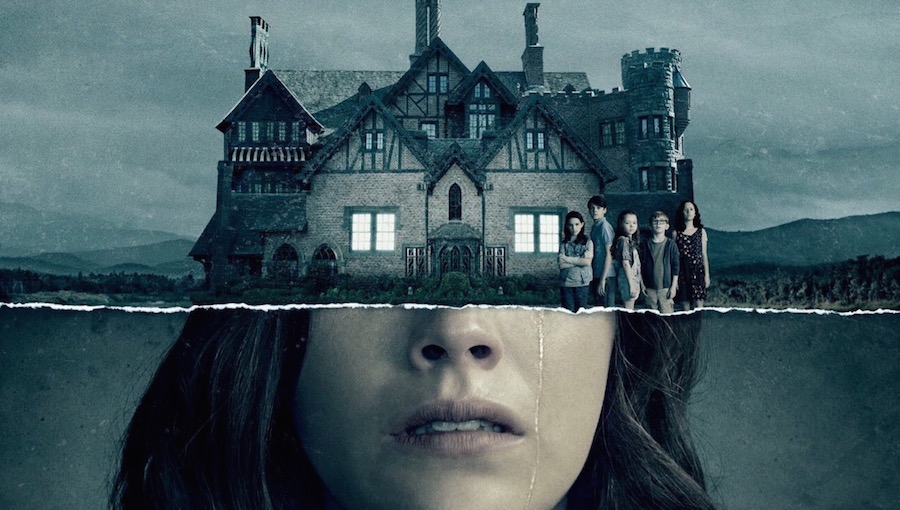As Halloween is fast approaching, the Fanbase Press staff and contributors decided that there was no better way to celebrate this horrifically haunting holiday than by sharing our favorite scary stories! Be they movies, TV shows, video games, novels, or any other form of entertainment, members of the Fanbase Press crew will be sharing their “scariest” stories each day leading up to Halloween. We hope that you will enjoy this sneak peek into the terrors that frighten Fanbase Press!
There are a lot of scary characters that will haunt me for the rest of my life, but thanks to Netflix’s new scary series, The Haunting of Hill House, I can add The Bent-Neck Lady to my list. And, I really don’t like her much.
The Haunting of Hill House started as a Gothic horror novel by Shirley Jackson and released in 1959. It was later adapted to film both in 1963 and 1999 as The Haunting. Most of us remember the mostly laughable and completely alternate adaptation in 1999, but the 1963 version stayed somewhat true to the horrifying novel.
Enter Mike Flanagan, one of my favorite modern horror directors, though possibly not as well-known. Flanagan is responsible for Oculus (one of my personal favorites), Ouija: Origin of Evil, and the Netflix hits Hush and Gerald’s Game. Flanagan once again adapted the novel, The Haunting of Hill House, for a Netflix series released earlier this month. The television show also deviates from the novel in many ways, yet focuses around the family of Hugh Crain who appears in the novel and previous movies.
Crain (the younger played by Henry Thomas and older played by Timothy Hutton) has moved his family into Hill House to renovate and flip the house. They plan on staying for eight weeks, but the house has something entirely different in mind. The viewer becomes intimately familiar with each of the players as the show unravels what really happened at Hill House one fateful night.

The series floats back and forth between past and present in such a seamless manner – sometimes as simple as one character from the present opening a door and flashing to the same character from the past doing the same. As with most of Flanagan’s works, the focus isn’t on the horror; it’s on character development and, in this series, the utter sadness that revolves around them. Some of the most beautiful moments of the show are from the camera work. One particular scene in the funeral home had me in awe as the camera floated from character to character as they wallowed in their grievances with the rest of the family. It truly showed a family shattered by Hill House and pushed the viewer to want to know more.
The scary scenes were filled with jump scares, which technically shouldn’t have worked, but did. Each and every time, I freaked out, jumped up, squealed… making that awkward “I’m scared” sound. I kept thinking, “Something’s coming, something’s coming.” It would come, and I’d still be scared. I dared to watch the first three episodes in the middle of the night with the lights out and door shut. I gave up halfway through the fourth episode, knowing I would probably never sleep again if I kept it up. There were several monsters to be afraid of, but The Bent-Neck Lady was the worst for me. I’ve since read of viewers throwing up, fainting, and doing all kinds of crazy things while watching. I wasn’t that bad, but I still had moments where the show made me question my sanity.
I’m a purist when it comes to adaptations, but the differences between the novel and series did not bother me in the least – possibly because the series was made so well. Maybe because Flanagan is one of my favorites and I loved the actors in the show. Or, it was because the show made me suspend reality. It was as if it were a separate entity from the novel, and that worked to make me not care about the differences. No matter if you’re familiar with the novel or the previous movies, this series is one you must watch . . . preferably with the lights on, but if you can stand it, keep it dark. The Bent-Neck Lady is much scarier that way.

